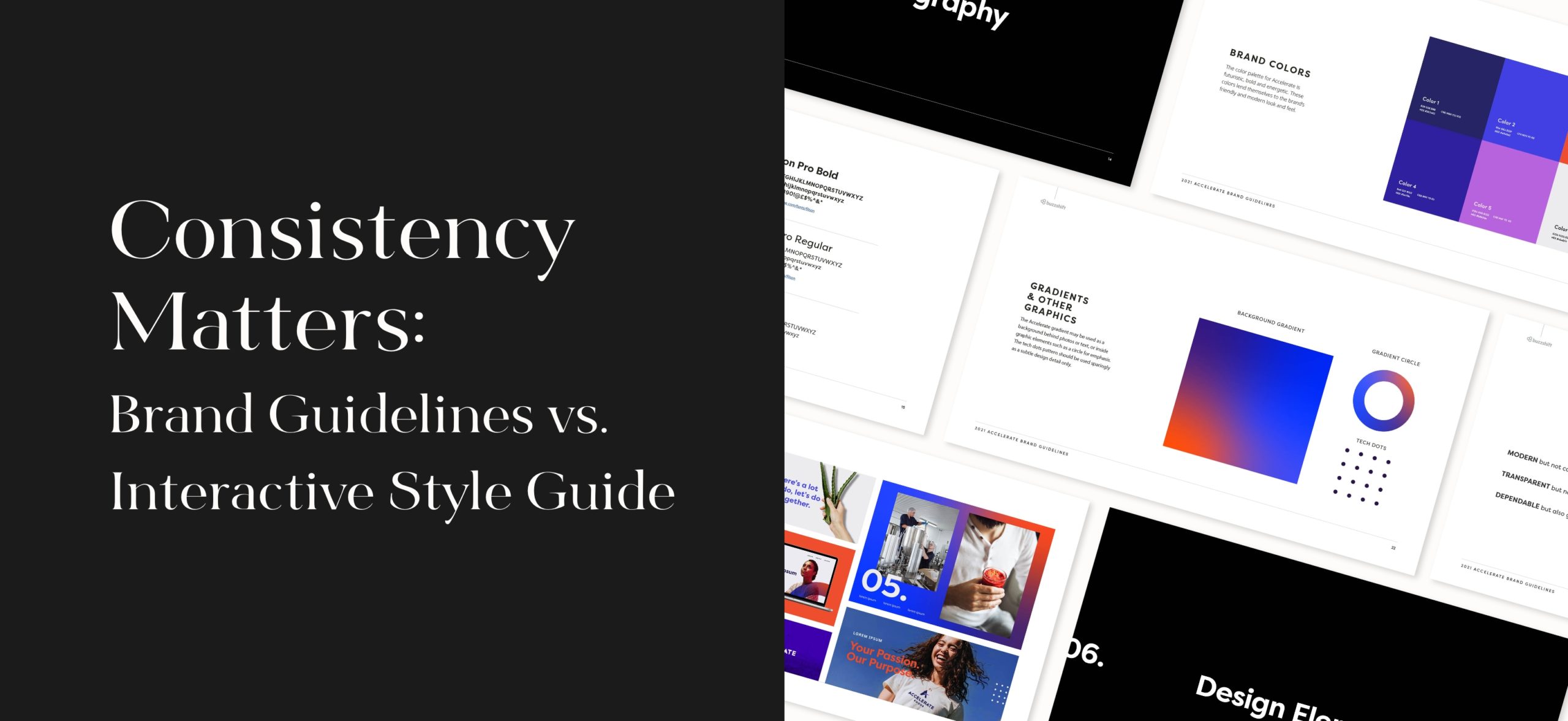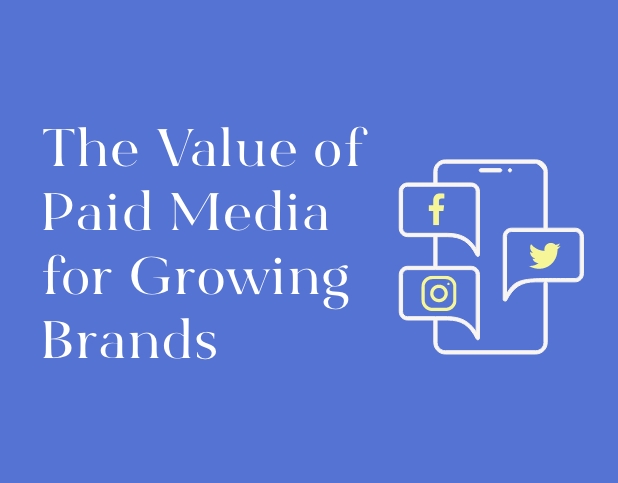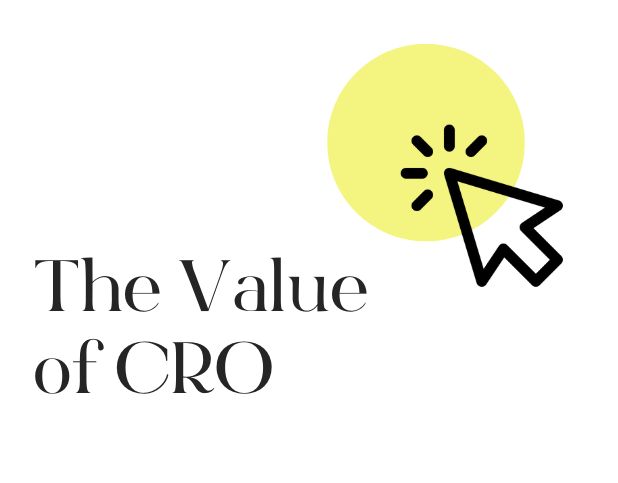We’ve all heard the saying consistency is key. While this phrase applies to many aspects of life, it is irrevocably true about the consistency of a brand’s key elements. Ensuring your brand has a consistent look and feel anywhere your customer is viewing it is the foundation of developing a cohesive customer experience. Brand consistency makes your customers feel you are established and will also ensure your audience recognizes your branding wherever they see it. Whether they are viewing your website, direct mailer, social media, or billboard, your goal should be to produce on-brand visuals across the board. There are a couple of ways to establish a brand’s one source of truth, and in this blog, we will discuss implementing a digital-focused interactive style guide or an all-encompassing set of brand guidelines. But what is the difference between brand guidelines and an interactive style guide, and which one is right for your brand? Keep reading to learn more!
To develop these guides, you would need to build your brand identity first and determine the goals of your brand. By first establishing your brand’s mission, purpose, the brand personality, unique positioning, and a few other foundational elements, you will then be able to select the tangible elements that are representative of your brand image. All of these design elements can then be collected and developed into either an interactive style guide or brand guidelines.
What is an Interactive Style Guide?
An interactive style guide is an important asset to the design and development of any digital design, for example, a website. Interactive style guides give you a single source of truth for designers and developers to use to ensure consistency and accessibility across both the desktop and mobile versions of a website. Defining the guide before beginning a digital design project will ensure consistency in the initial development and will provide a path and assistance for future development of branded materials. An interactive style guide is perfect for entirely digital brands who have no intention of physically recreating their brand elements
What elements are usually included in an interactive style guide?
- Logo sizing
- Web color palette (e.g. hex codes)
- Web typography sizing (e.g. H1, H2, Body, etc.)
- CTA styling (e.g. button hover states)
- Input field styling (e.g. search bar, newsletter sign up, etc.)
- Web iconography (e.g. Social Icons, expand/collapse, etc.)
- Navigation and footer styling (mobile & desktop)
- Direction for brand elements
What elements are usually not included in an interactive style guide?
- Brand positioning
- Unique selling proposition
- Voice and tone
- Copywriting examples
- Original photography
- Photography direction
What are Brand Guidelines?
Brand guidelines are the set of rules that define the overall look and feel of your brand and how to use your branding elements across all platforms, not just websites (e.g. email, presentations, packaging, etc). The brand guidelines are used by designers, writers, photographers, outside vendors, and anyone else using your brand’s elements to create marketing materials. They help you build a consistent brand identity that your audience can recognize across all platforms. Full brand guidelines are needed for a brand with a physical presence (selling a product with a logo, business cards, printed advertisements, etc) and especially if there is both a physical and digital presence (DTC brands, running both printed and digital ads, etc).
What elements are usually included in Brand Guidelines?
- Brand positioning
- Unique selling proposition
- Voice + tone
- Photography direction
- Logo
- Size guide
- Logo use & misuse
- Color palette
- Typography
- Brand application direction & examples
At BuzzShift, we work with brands at all stages of their path to success. Our creative and strategy team can work with you to determine your brand identity and brand strategy, and develop these key guides for your brand. Whether you already have an established brand and want to revisit your strategy, or you aren’t sure where to start with developing your brand identity, we can help! Reach out to our team to learn more!
About BuzzShift
BuzzShift is a digital growth strategy agency with a focus on mid-market, scaling DTC Brands. By combining the ideologies of branding, performance marketing, and retention agency, we are able to create memorable experiences with measurable results, and build long-term success for our clients with scalable, sustainable growth. Learn more about BuzzShift.







